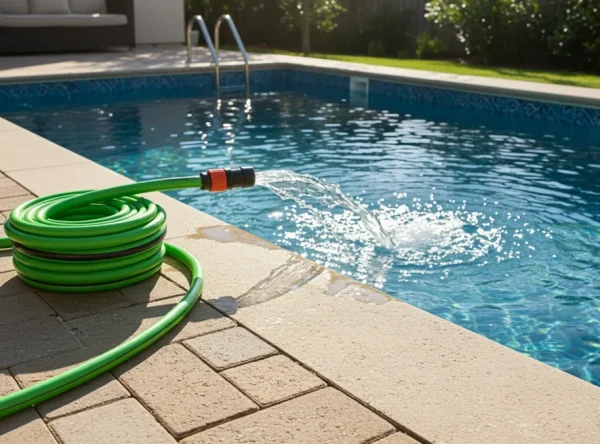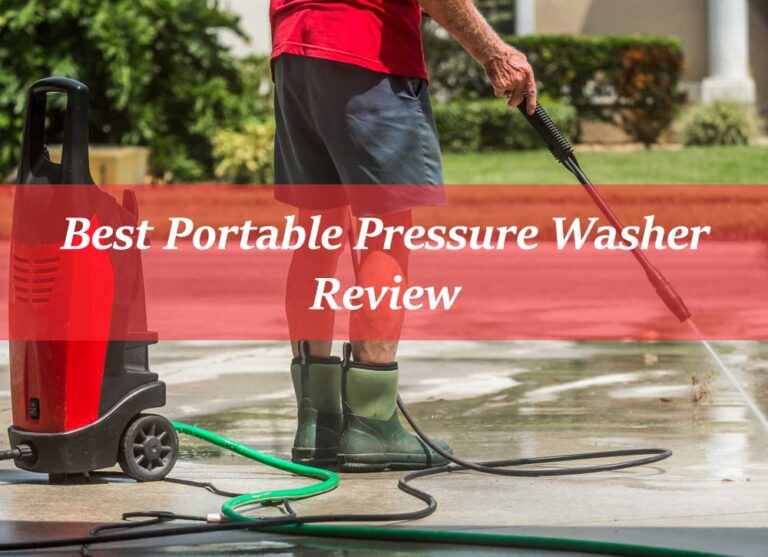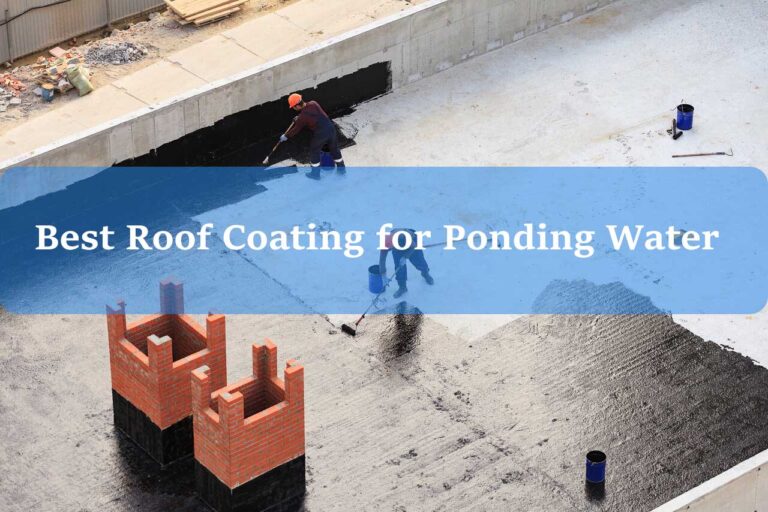My Journey Filling a New Pool: 5 Alternatives to the Garden Hose I Wish I Knew Sooner
When we finally installed our family pool, I thought the hard part was over. I pictured relaxing weekends and happy kids. The last thing on my mind was the logistical challenge of filling the massive new hole in my backyard with thousands of gallons of water.
My first—and, I admit, naive—thought was to just use the garden hose. How hard could it be?
I was wrong. Very wrong. After hours of seeing the water level barely rise, I started doing the math on my water bill and worrying about my well pump. I realized there had to be a better way. My frustration sent me down a research rabbit hole, and what I found was eye-opening. If you’re a new pool owner, let me save you the headache. Here’s my story and the best solutions I discovered.
Key Takeaways
After my initial failed attempt with the hose, here’s the bottom line of what my research and experience taught me. This is the “too long; didn’t read” version I wish I had from the start.
- For Speed and Quality: The clear winner is a pool water delivery service. It’s the method I ultimately chose. It’s fast, the water quality is excellent, and it saved my well pump.
- The “Free” but Risky Option: If you have a well, using your well water is tempting, but the risk of running it dry or burning out the pump is huge. I decided against it.
- The Sustainable Choice: For the eco-conscious, rainwater harvesting is a fantastic idea, especially for topping off the pool later. It’s a long-term project, not an instant fill.
- The Illegal “Shortcut”: Don’t even think about the fire hydrant. It’s illegal, dangerous for the public water supply, and can result in massive fines.
Why I Gave Up on the Garden Hose in Less Than a Day
My initial plan seemed simple enough, but here are the issues I ran into almost immediately, forcing me to look for alternatives.
The Agonizingly Slow Pace
I had the hose running for about six hours, and the water hadn’t even covered the sloped floor of the deep end. A quick search told me that filling my 15,000-gallon pool could take over 24 straight hours. I didn’t have the time or patience for that, especially with a fresh plaster coat that needed to be submerged quickly. If you want to see the painful math, check out this guide on how long it takes to fill a pool with a hose.
The Terrifying Water Bill Calculation
My next panic attack came when I thought about my utility bill. Our local water provider charges not just for the water we use, but also for wastewater processing. They assume most water goes down the drain, but the thousands of gallons going into my pool wouldn’t. I learned I could be on the hook for massive sewer fees for water that never touched the sewer. It was a hidden cost I hadn’t budgeted for. You can see more on this in this breakdown of the average cost to fill a pool with a garden hose.
The Strain on My Well Pump
Our home runs on a well, and I could practically hear the pump groaning under the strain of running nonstop. The thought of it overheating—or worse, our well running dry and leaving us without water for the house—was a non-starter. That’s when I turned the spigot off for good.
Alternative 1: My Solution – The Pool Water Delivery Service
This was the first and best solution I found. It’s exactly what it sounds like: a company that brings the water to you in a giant tanker truck.
These water haulers filled my entire pool in about three hours. It was amazing to watch. They arrived with a few trucks, ran wide, clean hoses to the pool, and the water level rose faster than I could have imagined. The water they brought was already treated, which made the initial chemical balancing process much simpler for me as a first-timer.
The biggest pro was the peace of mind. I got a fixed price upfront, and there was no wear on my well or surprise bills. The only challenge was making sure their large truck had a clear path to the backyard. I had to move a temporary fence panel, but it was a small price to pay. To figure out how many truckloads I’d need, I first had to calculate my pool’s volume in gallons, which was a crucial first step.
Alternative 2: The Well Water Gamble I Avoided
Since I had a well, this was my “Plan B.” But the more I looked into it, the more I realized the risks far outweighed the “free water” benefit. I read stories on forums about people who ran their wells dry, a problem that can take days to recover from and can cause permanent damage. Others burned out their well pumps, leading to an emergency replacement that cost thousands—far more than a water delivery service.
Furthermore, my well water is high in iron. I learned that this iron would have stained my brand-new pool plaster a nasty brown color as soon as I added chlorine. Avoiding that potential disaster alone was worth the cost of delivery.
Alternative 3: The Rainwater Harvesting Project I’m Now Considering
During my research, I came across the sustainable option: rainwater harvesting. The idea of collecting free, naturally soft water from my roof to fill the pool was very appealing. Rainwater is great because it doesn’t have the hard minerals found in well water.
The downside? It’s not a quick fix. You need a significant upfront investment in gutters, filters, and a large storage cistern. And, of course, you’re entirely at the mercy of the weather. For the initial fill, it wasn’t practical. However, I’m now seriously considering setting up a smaller system to top off the pool throughout the season, saving on water usage over the long term.
Alternative 4: The Fire Hydrant Myth
I’ll be honest, the thought crossed my mind for a fleeting second: what about that fire hydrant on the corner? My initial search shut that idea down fast. I found official policies from municipalities across the country, like Dayton, OH, and Littlefork, MN, which make it clear that connecting to a hydrant is illegal, can damage public infrastructure, and creates a serious risk of contaminating the public water supply. It’s a myth that this is a viable shortcut for homeowners.
Alternative 5: Pumping from a Natural Source
My property doesn’t have a pond or a lake, but if yours does, this could be an option. However, my research showed it’s not as simple as just dropping in a pump. First, you have to be sure you have the legal water rights to do so. Second, pond water is full of algae, bacteria, and all sorts of organic gunk. You’d need a serious filtration system and a lot of chemicals to make it safe for swimming. It seemed like more work than it was worth.
Frequently Asked Questions That I Had
How can I fill my pool without using a garden hose?
From my experience, the best way is to hire a pool water delivery service. It’s fast, convenient, and provides clean water. Other options are carefully using your well in stages or setting up a rainwater harvesting system.
What is the fastest way to fill a pool?
A water delivery service is the champion of speed. They filled my pool in a few hours. A garden hose would have taken me days.
Is it cheaper to use a water truck to fill a pool?
It was for me when I considered the risks. The upfront cost of the truck was predictable. The cost of my city water hose, factoring in potential sewer fees and the risk of burning out my multi-thousand-dollar well pump, made the water truck look like a bargain.
Can I use rainwater to fill my pool?
Absolutely. It’s a great, sustainable source. It’s just not practical for the initial fill unless you have a massive, pre-existing collection system. It’s perfect for topping off the pool later.
Conclusion: Your First Swim is Closer Than You Think
That initial feeling of excitement about our new pool quickly turned into stress when I was faced with the reality of filling it. The garden hose, which seemed so obvious, was clearly the wrong tool for such a massive job.
My journey through the research taught me one key lesson: a little planning goes a long way. For our family, the speed, convenience, and peace of mind that came with a professional water delivery service were worth every penny. It transformed a multi-day chore full of risk into a single, worry-free afternoon.
Whatever path you choose—whether it’s delivery, your well, or even rainwater—don’t make my initial mistake. By understanding all your options beforehand, you can kick off your first pool season with a smart decision, a full pool, and your sanity intact. Now, the fun part can finally begin.









